 |
This is the Shrine of Duc My
LaVang, Our Lady of Viet Nam. This marks the spot where she first appeared in 1798 and over the next 100
years. She appeared floating in the trees as represented by
the statue.
Nearby is a church
dedicated to her. The church was raised to the status of
Basilica by Pope John XIII.
Click the photo to see
a larger version.
|
 |
A close-up of the outdoor
Shrine with me standing
in the foreground left.
Click the photo to see
a larger version.
|
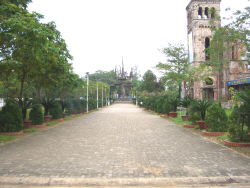 |
The main walkway crossing the property. On
the right is the Basilica bell tower and front
door. These are the only remaining portions of
the Basilica after it was bombed in the War.
In the background is
the Shrine we saw in the two previous photos.
Click the photo to see
a larger version.
|
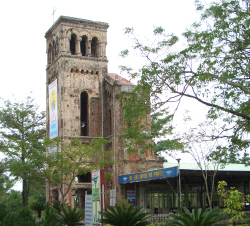 |
To the right of the
Basilica's bell tower is the new portion
of the basilica, a simple metal roof and glass with
a adoration chapel at the rear of the building
Click the photo to see
a larger version.
|
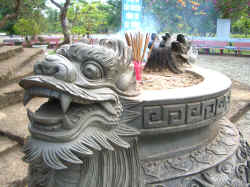 |
A large incense container in the form of a
dragon. Long sticks of lit incense are placed
in the sand instead of our use of candles.
Click the photo to see
a larger version.
|
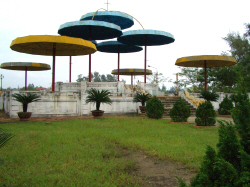 |
Modern-style canopies over a
raised cement stage where the outdoor masses are
held in August. 20-25 thousand pilgrims attend
every August on this small property. The
canopies are emblematic of trees.
Click the photo to see
a larger version.
|
|
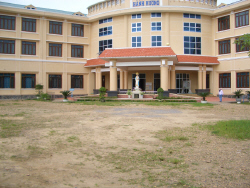
|
The Pilgrims' Center
on-site.
Click the photo to see
a larger version.
|
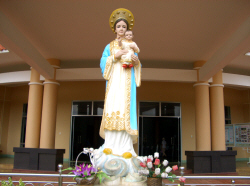 |
A statue of Duc Me La
Vang (Our Lady of Viet Nam) at the Pilgrims'
Center. La Vang is the hamlet where she appeared
over a period of 100 years of oppression by the
Emperors.
Click the photo to see
a larger version.
|
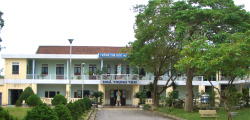 |
The retreat house
on-site.
Click the photo to see
a larger version.
|
|

|
This is the commonly portrayed statue of Our Lady
in La Vang. She wears the long white gown (Owe
yi) with a covering trimmed in blue and gold.
She wears the traditional Vietnamese crown in gold,
always holding the Child Jesus.
|
|
|
|
Return
to Journeys page to see another journey. |
|
|